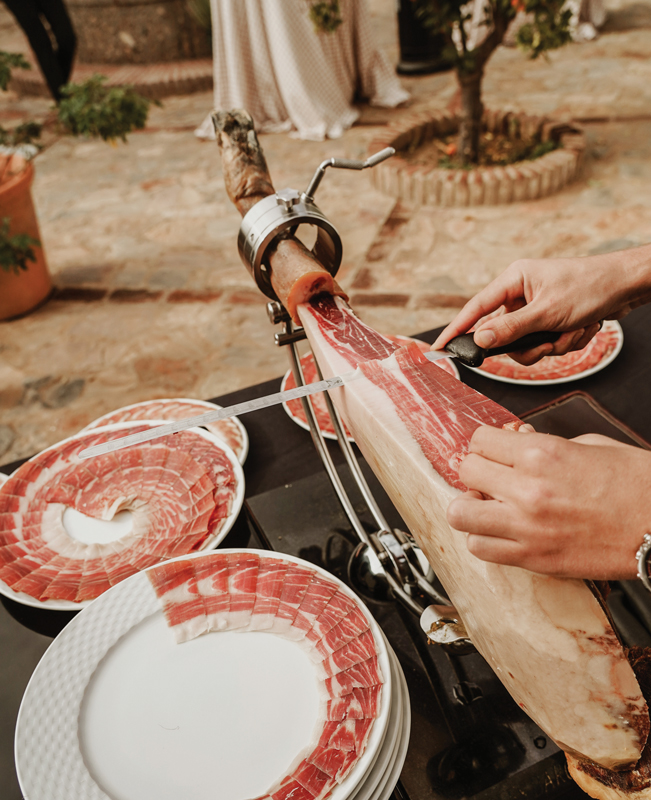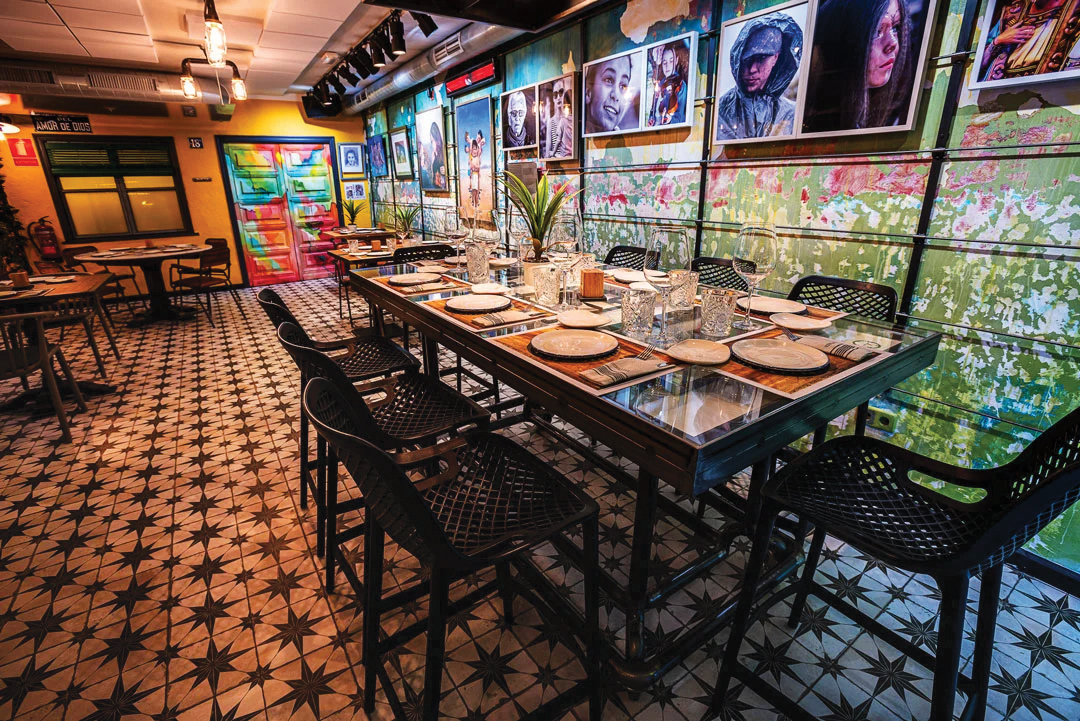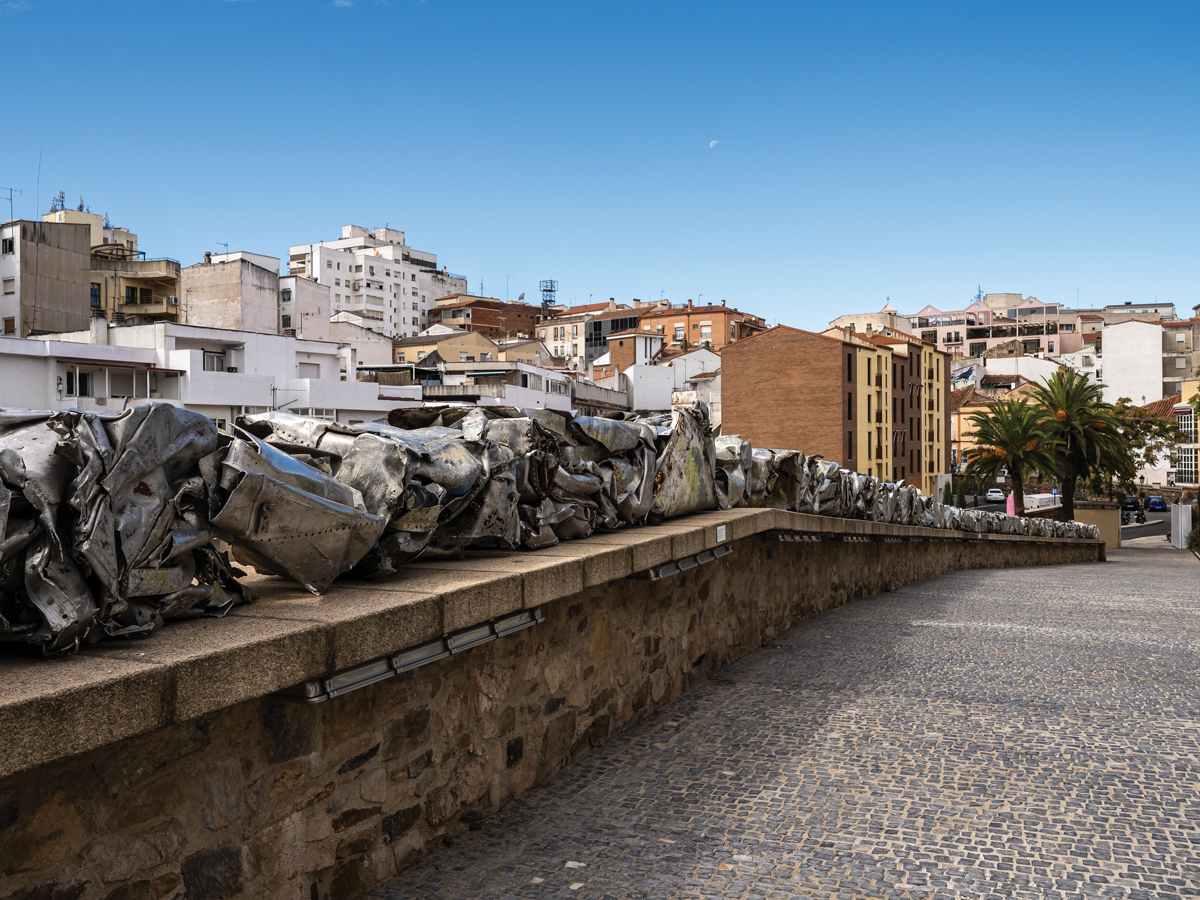
6 minute read
Extremadura’s Eclectic Charm
Dragons, Paprika & Palaces
By Barbara Ramsay Orr
For fans of Game of Thrones, aka “Thronies,” the Spanish city of Cáceres is a place of pilgrimage. (Cáceres is pronounced “CATH-air-ays.”) This walled city in the northwest of Spain hasn’t changed appreciably since the 12th century. Its combination of Renaissance, Gothic and Roman architecture and its stone fortresses and high battlements make it the perfect stand-in for the role of King’s Landing in the popular television series. The walled city did such a good acting job that the film crew returned to record scenes for the prequel, House of the Dragon.
It’s almost other-worldly to walk these streets that have remained the same for centuries. That’s what I discovered throughout Extremadura – a preservation of Spain’s storied history, with a cheeky overlay of stylish modernity. A visit here is a multi-layered adventure.
Stretching between the mountains and valleys that border Portugal, the area is symbolized by its green meadows filled with the round shapes of holm oak, some of which are hundreds of years old. The acorns from the holm oaks make up most of the diet of the region’s famous Jamón Ibérico. Sliced thinly and glistening with fat, the delicate slices of jamón melt on your tongue.
In Hervás, I stumble upon a group of gentlemen demonstrating the precise skills involved in slicing a leg of Jamón Ibérico. One leg of Pata Negra jamón, the best quality, costs $1,000 and upwards, so ultra-thin slicing is a prized skill. I’m spoiled as each expert slicer invites me to sample their veil-thin slivers of ham. I find jamón in almost every restaurant, along with dishes redolent with smoked paprika, green and fruity olive oils and honeyed churros.

Dining in Extremadura is an adventure that’s both steadfastly traditional and playfully experimental. Atrio Cáceres, an opulent three-Michelin-star restaurant and boutique hotel, has become a culinary destination in itself. The restaurant gained added notoriety in 2021 when there was a robbery. A couple checked in for dinner and then stole away in the middle of the night with close to $2,500,000 of wine stolen from the restaurant’s renowned wine cellar. One bottle was an 1806 Chateau d’Yquem worth over $500,000. The loss was devastating to the two owners, but the resultant publicity increased the restaurant’s fame. (The wines were never recovered but the couple was caught and imprisoned.)
At Versátil, a modest one-Michelin-star restaurant in a small village, Zarza de Granadilla, the blend of creative presentation and elegant flavours makes lunch a celebration. Chestnut soup is served with a dollop of pigeon mousse, followed by Jamón Ibérico carpaccio topped with a vegetable vinaigrette, micro greens and local honey, ravioli stuffed with seasonal mushrooms with a foie gras sauce and charcoal-roasted Extremadura beef – all presented with cheerful style.

In Vera, I tour a paprika factory, Las Hermanas, female-owned and operated, which produces some of the world’s best smoked paprika. Owner Alicia Lopez follows the traditional methods of production, using hand-picked organic local peppers and oak to smoke the peppers. There is a museum of paprika too, Jaraiz de la Vera Paprika Museum, showing the history and production methods of the “red gold.”
The balance of old and new is also evident in the local accommodations. I stayed in the Palacio de Oquendo, an NH Hotel Group property in Cáceres. It’s a restored 16th-century palace that has kept its facade, its stonework and character, but offers completely modern rooms and an excellent café. The paradors of Spain, state-owned hotels usually in historically significant buildings, are some of the most interesting accommodations in Europe, which remains true in Extremadura. In the Parador de Plasencia, originally a 15th-century convent, I sleep in a room that’s large and airy, with stone floors, high windows, and double doors that open up to a terrace with views of the city. If you stay here, have a drink in the night bar in the old monastery wine cellar. Be sure to notice the flying staircase, built in 1557. Also in Plasencia is the 28-room Hotel Palacio Carvajal Girón, a 16th-century restored palace in the old Jewish quarter of the city. In Vera, the castle-like Parador de Jarandilla de la Vera lets you sleep amongst history. This is the palace where King Charles V stayed while awaiting renovations to the Monastery de Yuste.

Ancient history is everywhere. The valleys of Extremadura were once a vital part of the Via de la Plata, the Silver Route, and pilgrims take this southern route to Santiago still today, hiking along rivers and gorges and staying in humble refugios. In a farmer’s field, I explore the ancient ruins of the once-mighty Roman city of Cáparra. Its four-sided arch is unique in Spain. The ruins are in the process of being excavated but the sense of history is omnipresent. This was once an important stop on the Via de la Plata and nearby Granadilla is another. The 9th-century fortified town and castle, once abandoned, is being restored. Its castle suggests childhood fairytales.
In Mérida, the Roman amphitheatre is one of the most important and well-preserved Roman ruins in Europe, while the National Museum of Roman Art, designed by architect Rafael Moneo, holds an astounding collection of Roman artifacts and art. Walking to lunch in Mérida, I wonder at a restored temple to Diana on a main street of the city, sitting unobtrusively between a grocery shop and a restaurant.
Huddled into the hillside near Vera is the Monastery de Yuste, an ancient walled monastery made famous when King Charles V chose the building as his final refuge after abdicating the throne in 1556.

The ailing king had his bedroom situated above the church altar, with an opening through which he could observe the services. The austere rooms of the King’s apartments and the story of Charles V are fascinating but best of all are the gardens surrounding the monastery, and the arcaded patios. If you visit in early spring, the valley is a white cloud of flowering cherry trees.
To balance out the old, visit the Helga de Alvear Museum in Cáceres, where the entrance to the art gallery is lined with crushed squares of metal that are the remains of Francisco Franco’s yacht. Inside is an important collection of contemporary art, by both Spanish and international artists, with a monumental installation, Descending Light by Ai Weiwei, in the first gallery.

Extremadura is a place to slow down and savour the deliberate pace of rural Spanish life, where the local character is celebrated and crowds are generally non-existent.
It’s a feast of a place, in every way, elevated by the fact that it is less touristy, less busy and less formal than the big sister Spanish cities of Madrid, Barcelona or Seville.
Come for the allure of dragons, but stay for the jamón, the monasteries, and the bucolic landscape.










